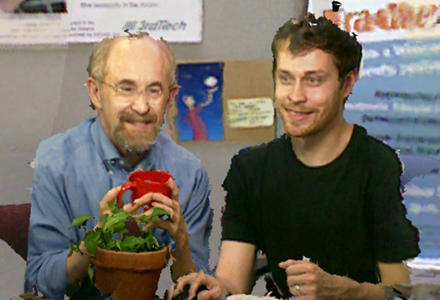The new social network
Carolina computer science professor sees augmented reality devices becoming part of an immersive social network.

A man sits outside a café in North Carolina. His wife, in Paris, calls him and tells him she would like to have lunch. He puts on a pair of eyeglasses and presses a button. Then, suddenly, she is sitting across the table from him. He gets up and sits next to her, and she turns to her left to face him — as if she was really there.
This is not some science fiction story, according to Henry Fuchs, a computer science professor at UNC-Chapel Hill. This is the augmented reality dream: a pair of light, comfortable glasses that easily project an image into the wearer’s environment. And researchers in UNC’s computer science department are working on this kind of technology right now. Although still in the very early stages and not ready for public consumption, this tool could change how we interact with each other.
“You want to be with people. Right now we’re limited in that way,” Fuchs says. “How lame is our social network now? It’s like telegraphs. There’s no subtlety.”
Fuchs sees augmented reality devices becoming part of an immersive social network. Facebook has already put $2 billion into researching augmented reality headsets, and Fuchs speculates that they see augmented reality as a way to get an edge in the social network market.
40 years of research
Fuchs started work on augmented reality technology in 1970 at the University of Utah. He studied with Professor Ivan Sutherland, who designed and built the first head-mounted display that could place simple line drawings into the user’s view.
“People would lie on the floor and we would do laser scans of them. You could sort of see that maybe there was a human there,” Fuchs says with a laugh.
But that was 45 years ago, and virtual reality software has accelerated at an incredible pace since then. UNC’s current headset uses tiny light sources to produce an image. Andrew Maimone — a UNC computer science PhD graduate — calls the design a pinlight display, a model he proposed and worked on while at UNC. Unlike pinholes, which collect light to make an image, the pinlights on this device produce light to create an image. Worn on the viewer’s head with a screen in front of the eyes, the display combines digital images with the real world, creating the illusion that those images are present in the user’s environment.
To keep reading, see: http://endeavors.unc.edu/the_new_social_network




